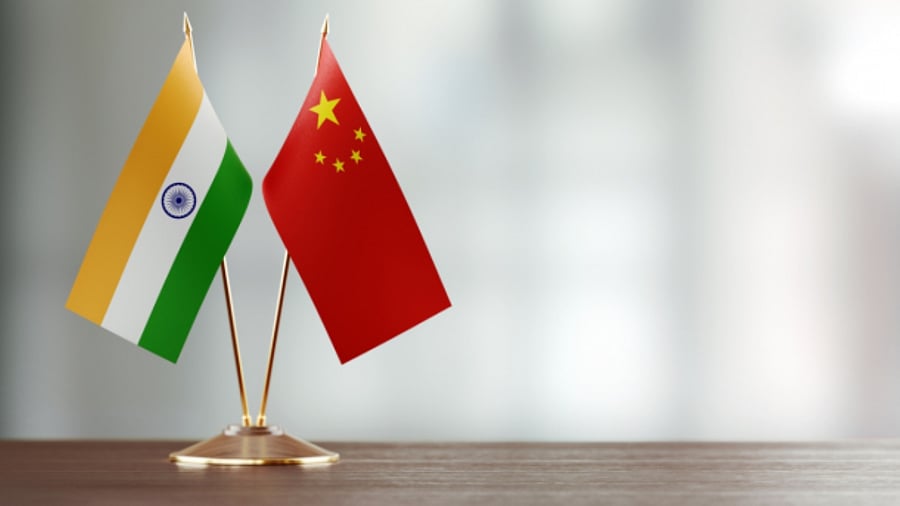
India’s strategic space in South Asia shrunk alongside China expanding its footprint in the region. China’s exports to the region have grown over five times between 2005 and 2020. In comparison, India’s exports to the region have grown only thrice over the corresponding period. China’s economic rise has prompted Beijing to invest heavily in the region.
South Asia shares a cultural, social, ethnic, linguistic and religious heritage, but its post-colonial period is mired in the hostile India-Pakistan relationship that has deeply divided the region and deters political, social and economic integration. Therefore, South Asian countries prefer to trade with other distant nations rather than with their own neighbours. China displaced India as Bangladesh’s top trading partner in 2015 and imports from China represented 34 per cent of Bangladesh’s total imports in 2019. The other South Asian states are still underdeveloped economies. Afghanistan is a conflict-ridden, Cold War-wrecked country, plagued by a narcotics-driven economy. As for Pakistan and Sri Lanka, both countries are now in economic quagmires. The other three nations in the region -- Bhutan, Nepal and Maldives -- are primarily tourism-driven economies without much else to enable high growth.
As a result, most of India’s neighbours with low growth due to underdeveloped economies find China, with its mega pool of foreign exchange resources, an attractive ally which is willing to invest in their infrastructure projects, particularly airports, roads, ports and power plants. In this backdrop, Beijing’s economic statecraft enables it to carve out a strategic space in the region due to weak integration among the South Asian states.
China aims to alter the prevalent US-centric international political order and prove its credentials as a Superpower. Therefore, Beijing’s foreign policy entails the quest for Asian leadership, where its peer competitors are India, Japan and Vietnam. Otherwise, China’s strategic stature -- massive territory, forex-surplus economy, large skilled pool of human resources, and modernised military -- naturally makes it a preponderant power in Southeast/East Asia, which is constituted by small island-states.
In South Asia, India’s strategic stature stands out in sharp contrast, which China aims to counter through close relations with New Delhi’s neighbours.
China‘s regional engagement is through development assistance and establishment of Confucius Institutes, besides generous scholarships to South Asian students to study the Chinese language and for other studies/research in China. Besides, Beijing has initiated agreements for cultural exchanges with South Asian countries.
India, as a traditional power, now has to contend with China, which has emerged as an accelerating one in the region. China plans to promote Afghanistan-Pakistan collaboration, post-US withdrawal, to ensure the security of its western frontier, advance the Belt and Road Initiative (BRI), check anti-China forces, particularly the East Turkestan Islamic Movement and al-Qaeda.
Also, China’s recent “Spring Diplomacy” in South Asia saw visits to Pakistan and Afghanistan and its attendance in the Organisation of Islamic Countries Foreign Ministers’ Meeting in Islamabad. Besides, Chinese participation in Foreign Ministers’ Meetings on Afghanistan aims to increase Beijing’s influence over the Taliban regime through Islamabad.
Amidst all this though, the China-Pakistan Economic Corridor faces an uncertain future with Pakistan’s economic distress and increasing terrorist attacks against Chinese projects/personnel in Pakistan.
More recently, China also appears to be losing ground in Nepal after the Deuba government signed up for the US foreign economy policy initiative to fight global poverty, called the Millennium Challenge Corporation (MCC) agreement, and voted against Russia in the United Nations. Moreover, Deuba’s maiden foreign visit to New Delhi after assuming office in July last year prompted Chinese analysts to dub the Deuba regime “pro-US” and “pro-India”. Beijing is particularly apprehensive about US–India influence on Nepal’s Tibet policy.
Sri Lanka has proven a difficult one for China after the ouster of the “pro-China” Rajapaksas. Then President Gotabaya had conveyed to the US Secretary of State Mike Pompeo in 2020, who was on a visit to Colombo, that Sri Lanka would not sign the MCC agreement with the US. Now, China is worried about the future of its investments in the island nation, negative publicity over the debt trap, pressure on Beijing to restructure debts, and the possibility that Colombo may sign the MCC agreement. China is undecided on Sri Lanka’s request for loan restructuring and additional financial aid.
Also, China withdrew from two river projects in Nepal in 2018, which were part of a 1200-MW power project. Moreover, China has not committed assistance to Bangladesh on the 1.1 million Rohingya refugees resident there since 2017.
While India has limitations in matching China’s economic assistance to the region, New Delhi could leverage its soft power -- as an education, healthcare and IT destination -- to cultivate closer regional ties. Importantly, India should re-work its image as an arrogant, overbearing patriarch in the region to ensure cordial neighbourly ties.
(The writer is member-secretary, Institute of Contemporary Studies, Bengaluru)